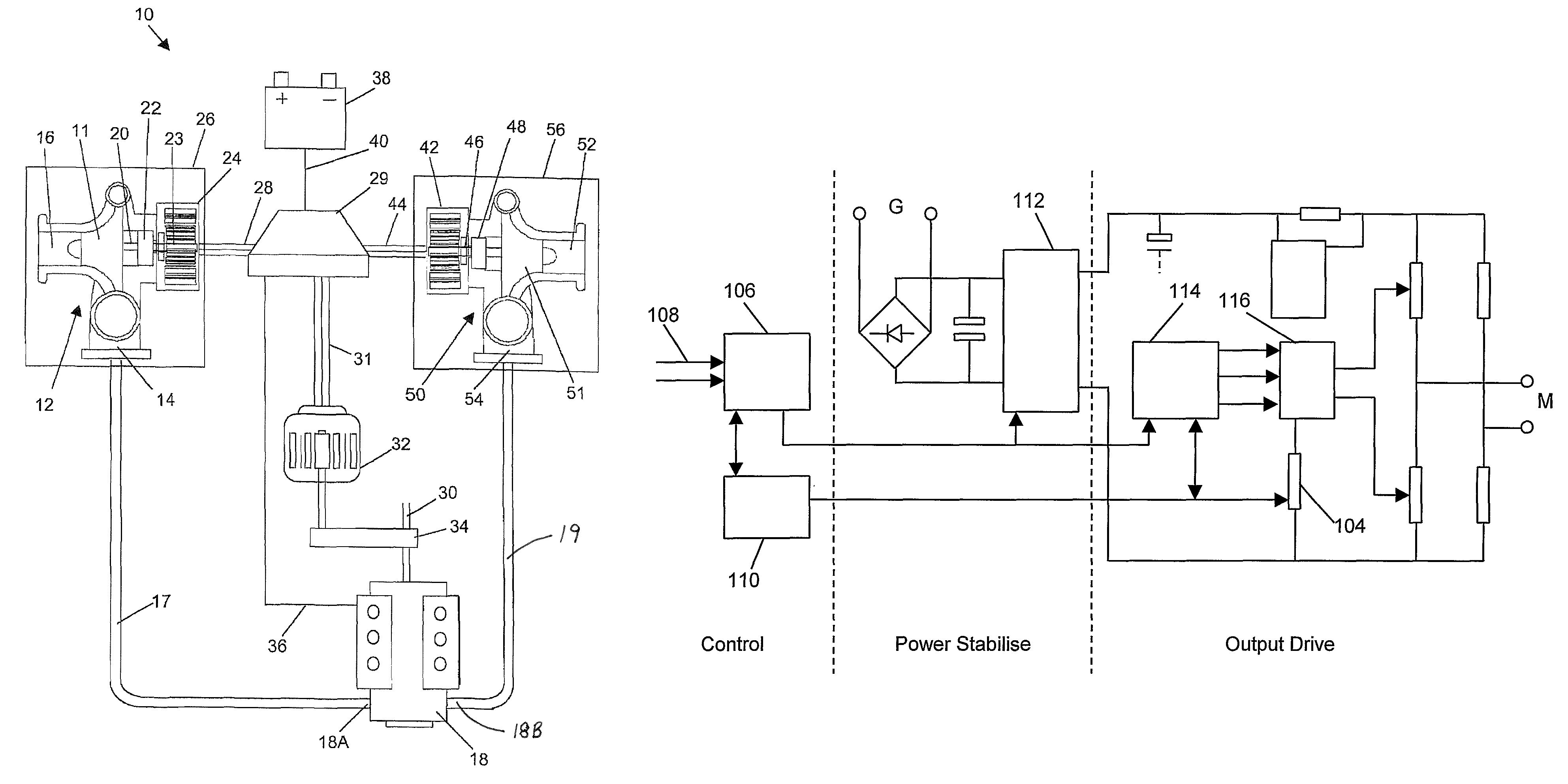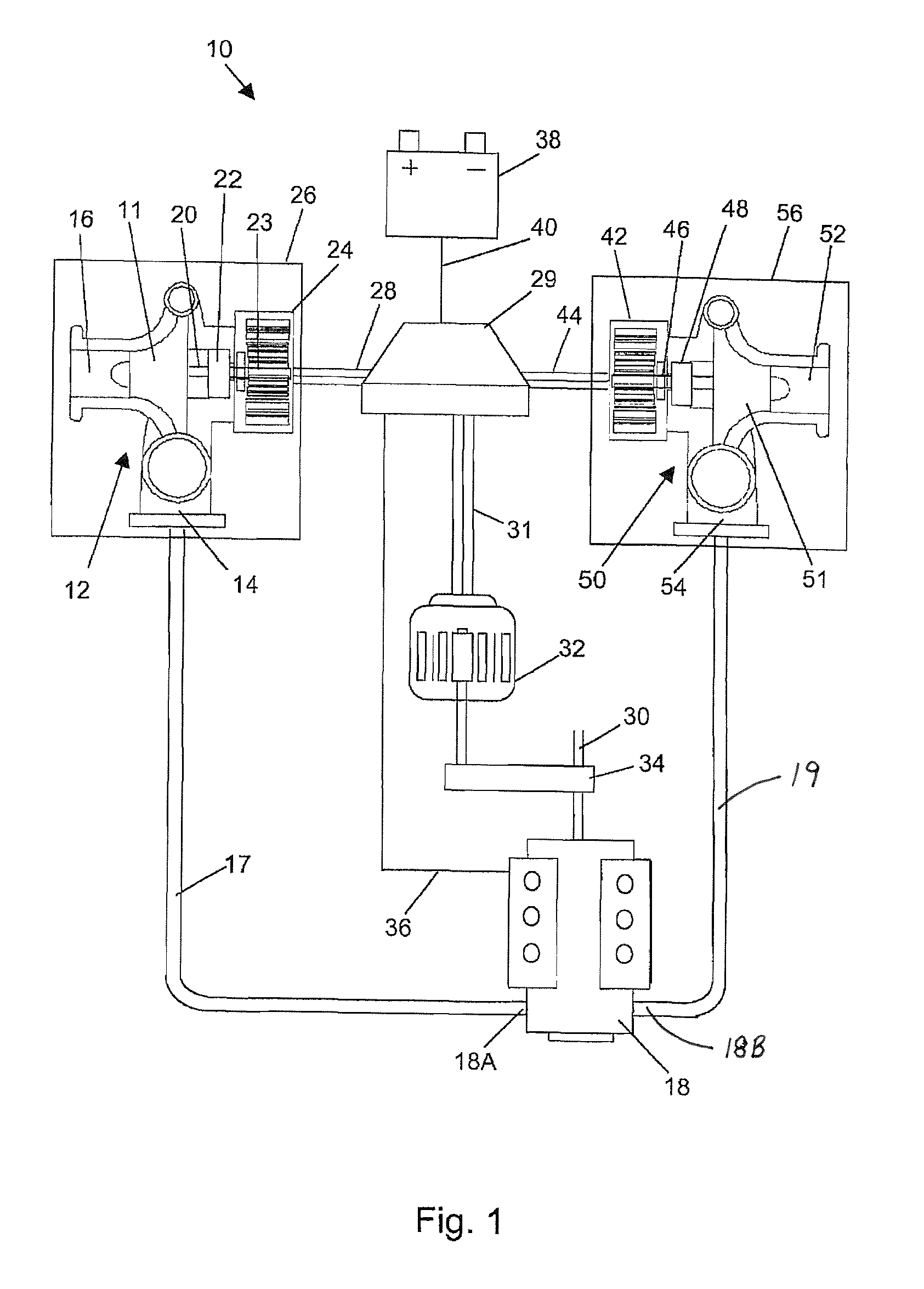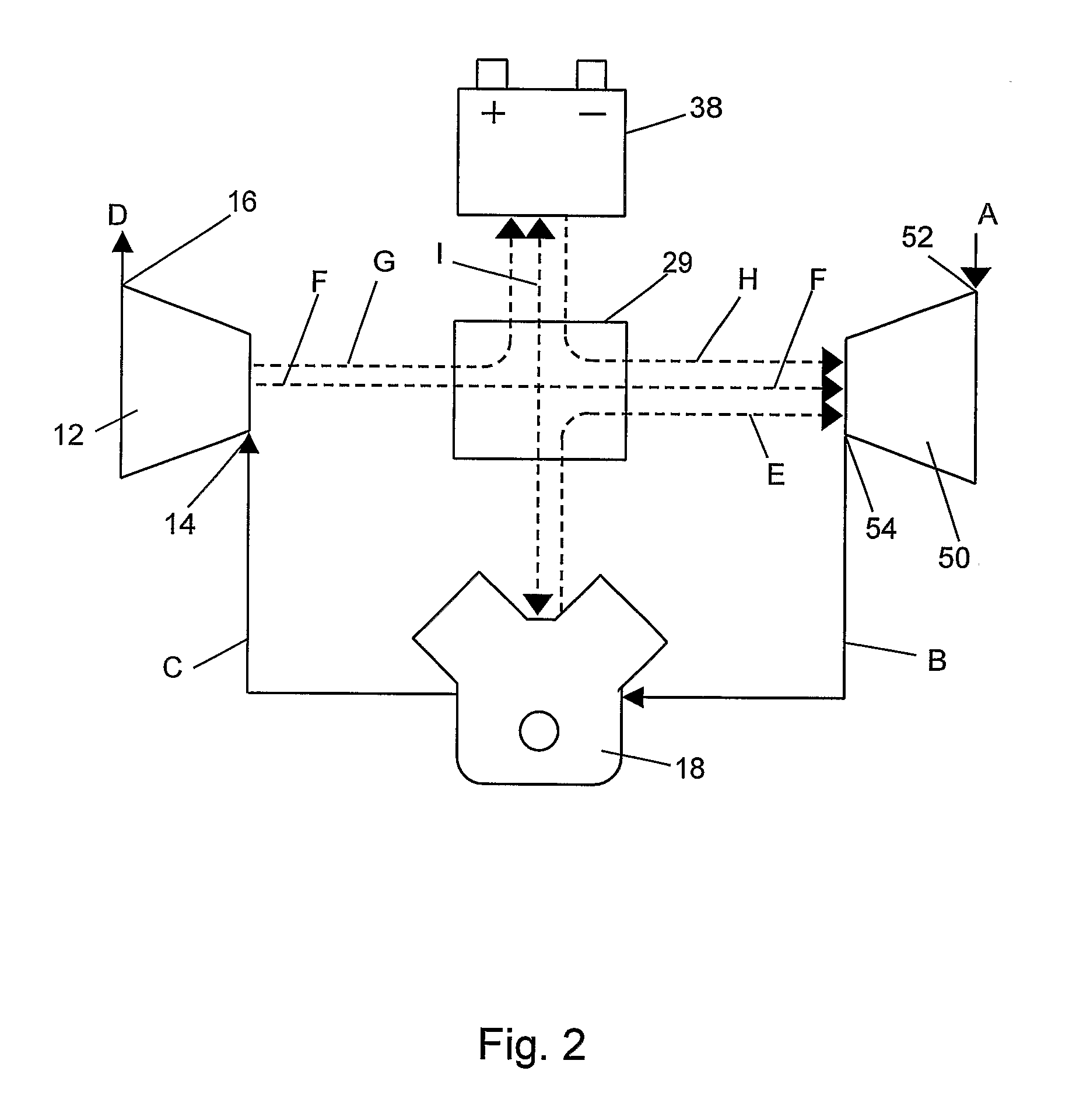Engine induction system
- Summary
- Abstract
- Description
- Claims
- Application Information
AI Technical Summary
Benefits of technology
Problems solved by technology
Method used
Image
Examples
Embodiment Construction
[0044]Turning firstly to FIG. 1, there is shown the physical connections between the basic components according to one embodiment of the present invention. It will be appreciated that the system of the present invention is typically suited for use in conjunction with internal combustion engines for road vehicles, although the present invention can be applied to other applications in which there is a transfer of compression work between two gas streams.
[0045]The basic system 10 shown in FIG. 1 comprises a turbine 12 having a turbine wheel 11, a tangential gas inlet 14 and an axial gas outlet 16. The inlet 14 is connected to the exhaust 18A of engine 18 by ducting 17 in a conventional manner, such that the flow of combustion gasses exiting the engine cylinders drives the turbine 12.
[0046]A variable frequency AC generator 24 is connected to the turbine output shaft 20. The output torque of the turbine drives the three-phase generator rotor. Mechanical linkage in the form of gearing 22 ...
PUM
 Login to view more
Login to view more Abstract
Description
Claims
Application Information
 Login to view more
Login to view more - R&D Engineer
- R&D Manager
- IP Professional
- Industry Leading Data Capabilities
- Powerful AI technology
- Patent DNA Extraction
Browse by: Latest US Patents, China's latest patents, Technical Efficacy Thesaurus, Application Domain, Technology Topic.
© 2024 PatSnap. All rights reserved.Legal|Privacy policy|Modern Slavery Act Transparency Statement|Sitemap



